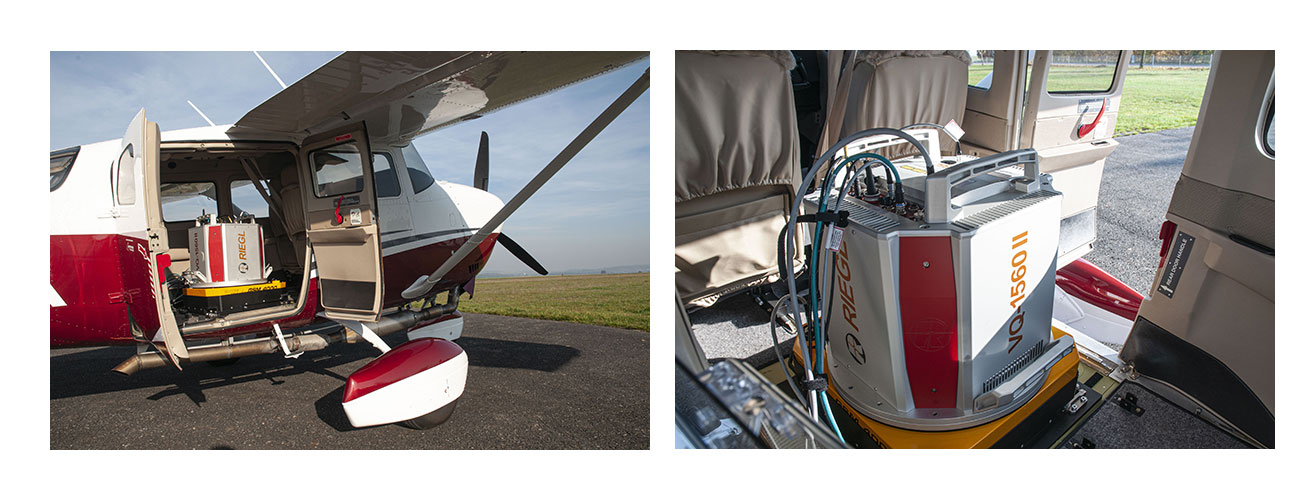Aeronautical or sectional maps are good friends to most pilots. Pilots use them to understand departure and arrival areas in order to establish safe flight plans. They detail obstacles including antennas, power lines and buildings that may complicate a pilot’s trajectory in the departure and arrival corridors. For more than two decades, laser scanners have been the basis for these maps and integral in efficiently providing information aimed at keeping pilots and aircraft safe.
“The digitalization of the world is inevitable, and no area of life can be imagined without it. Therefore, the demand for corresponding technologies regarding data acquisition continues to grow.” - RIEGL
As digitalization increases throughout the world, the use of airborne laser scanning is leading the way. RIEGL, a laser research, development and production company delivers solutions, with high-performance airborne mapping systems. The full RIEGL product portfolio comprises laser scanning systems including associated software packages for terrestrial, industrial, mobile, airborne, and UAV-based applications in surveying. Laser scanners enable mapping of corridors, villages, cities or even countries. Further, service providers are using airborne laser scanning to detect changes in city environments, plan construction projects, monitor land or glacier movement, map power lines and pipelines and survey coast lines and inland waterbodies. The laser technology is integrated into all kind of aircraft, creating specialized solutions for the wide range of unique missions.
RIEGL, headquartered in Horn, Austria, began with the development and manufacturing of semiconductor-laser distance meters in 1978. Twenty years later it presented the first 3D terrestrial laser scanner and began the new millennium in 2004 with a 2D laser scanner, revolutionizing data acquisition in airborne remote sensing technology. With both developments, the world of aerial survey and ISR (Intelligence, Surveillance, Reconnaissance) changed forever.
“It is one of our passions,” Dr. Johannes Riegl, Founder and CEO of the RIEGL group of companies, explained about aviation, “Today, we have over 50% of our business in the airborne and UAV [Unmanned Aerial Vehicle] segments.”
To further increase testing and calibration capabilities of its airborne laser scanning systems, RIEGL chose to invest in a CESSNA Turbo STATIONAIR piston (T206H). RIEGL says the aircraft investment ensures it provides customers with top-class surveying equipment and has led to the expansion of the business. To implement the surveying equipment, which can include scanners, cameras, Inertial Measurement Units (IMU), Global Navigation Satellite Systems (GNSS), as well as power supply, data recording, and more, RIEGL partners with Airborne Technologies.
CEO of Airborne Technologies Wolfgang Grumeth said it all starts with choosing the right airplane.
“Our business model, being a one-stop-shop for the end-user works out very well. We buy the plane, do all the modifications and hand over an optimal customized and certified turnkey solution,” Grumeth said. Being fully satisfied with the work of the Airborne Technologies team, RIEGL says it can recommend the work in providing a ready for take-off, state-of-the art solution.
“With the support of Airborne Technologies, we have designed an efficient and user-friendly complete package tuned to our requirements. With the Cessna T206H, we have an aircraft that perfectly meets our needs. In short, this decision was an important puzzle piece on the journey to positive business development,” said Peter Rieger, RIEGL Airborne Laser Scanning Business Division Manager.

The RIEGL VQ-1560 II Airborne Mapping System with SOMAG 4000 integrated into the Cessna T206H piston
The company emphasizes the Cessna Turbo Stationair piston as being particularly flexible for a wide range of sensor installations. Paul Kuntner, RIEGL supply chain manager, called the side door “comfortable” and said it provides user-friendly access to the laser scanning equipment. RIEGL added the Turbo Stationair aircraft also scores well with the high payload and large cabin – both vital in the implementation of specialized equipment.
“In short, this decision was an important puzzle piece on the journey to positive business development.” – RIEGL
RIEGL says its goal is to connect with customers from across the globe as laser scanning is utilized worldwide. As sensors become indispensable in the world market, RIEGL said it sees high demand on laser scanners and systems, especially within aviation.
With the delivery of RIEGL’s
Cessna Turbo
Stationair piston, RIEGL said it’s now in a better position to handle the increasing number of necessary test flights. The company says this wouldn’t be possible without Textron Aviation and the relationship allows RIEGL to move forward in providing customers worldwide with high performance and reliable laser scanning systems for airborne mapping.
Videos and stories contained in this site may contain information that while accurate at the time of publication, has since been updated. Please connect with a representative for any questions.